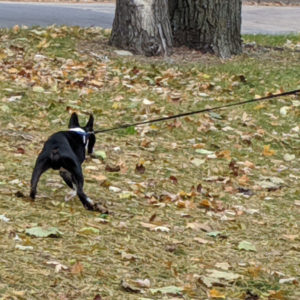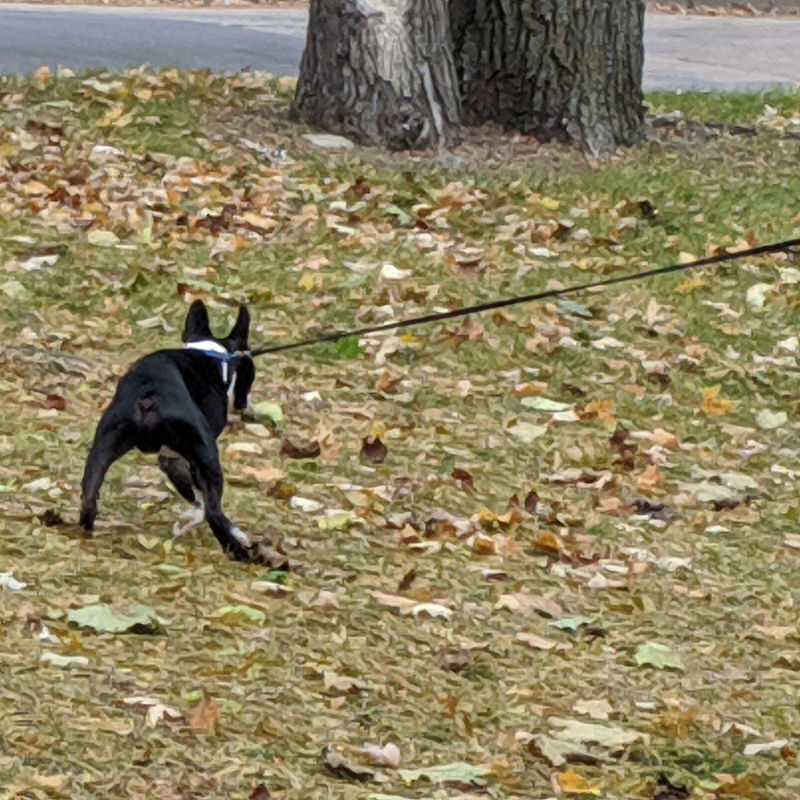Telling your dog to “calm down” is ridiculous. It means nothing to the dog, unless you teach a calmness protocol. And the absolute worst time to try to achieve calm with your dog is when they’re excited.
One of our favorite quotes is from science fiction author Robert Heinlein. “Never try to teach a pig to sing; it wastes your time and it annoys the pig.”
What you can do
Calm is not a dog goal. If you wanted a calm pet, you should have gotten one that either purrs or is stuffed with cotton batting. Dogs, even some senior dogs, are pets for activity. Whether that’s hiking, biking, canoeing, or strolling around the block.
Can you teach your dog to act politely, even when over-stimulated, stressed, and excited? Of course you can! And that’s the actual goal. You don’t want your dog to be calm. You want your dog to listen and remember their manners even when they’re excited.
Again: your real goal is for your dog to listen and behave everywhere, no matter what’s happening around you. Your objective is a dog who thinks and acts appropriately, even in a state of high arousal. Even if there’s a squirrel running across the street. Especially when a bicyclist zooms by. Definitely when your child’s entire 2nd Grade class is shrieking through the house playing “Hide and Seek.” So telling your dog to calm down won’t work.
How to get there
Dog issues seem to clump into clusters. We’ll hear about the same issue from several people within days, then nothing about that for months. This week it was definitely getting dogs to “calm down” in the presence of stimuli on walks.
And most people seem to think that calm is achieved by redirecting or distracting your dog. It’s not. It’s letting the dog see what’s going on, learning that it’s really not all that exciting, and choosing to get on with life. Two of our students this week mentioned their dog going nuts watching squirrels while out on walks.
We asked them what they did when their dog started lunging and pulling to chase the squirrel. Both pretty much said they dragged their dog off in the opposite direction. So the dogs learned absolutely nothing other than how strong their people are, and which buttons to push to annoy the heck out of them.
Changes in attitude

Instead of redirecting, distracting, and dragging, how about letting your dog watch the damn squirrel?
Try to get far enough away so your dog can watch calmly without pulling. Then just stop and let your dog watch. Squirrels are kind of fun to observe for a few minutes. Your dog will, in time, tire of it. If your dog isn’t chasing, the squirrel’s probably not going to do anything all that interesting.
Just wait. If your dog sits, great! Give him/her a cookie. Don’t tell them what to do. You don’t even need to talk to him/her. This would be the time to check your phone. Let your dog have a couple of minutes to do dog stuff.
When your dog is done watching, or at least staring intently at the squirrel, say something like “Okay, let’s move on!” and go. This is another instance where distance is your friend. Be far enough away so your dog can see, be seen, and still listen to you, a little bit.
Chances are the next squirrel won’t be as fascinating as this one was. Will your dog ever not notice squirrels? You hope not! It’s one of the things dogs are meant to do. Will they be able to glance, recognize, and ignore? In time, as long as you teach them that’s the proper way to behave in public.

